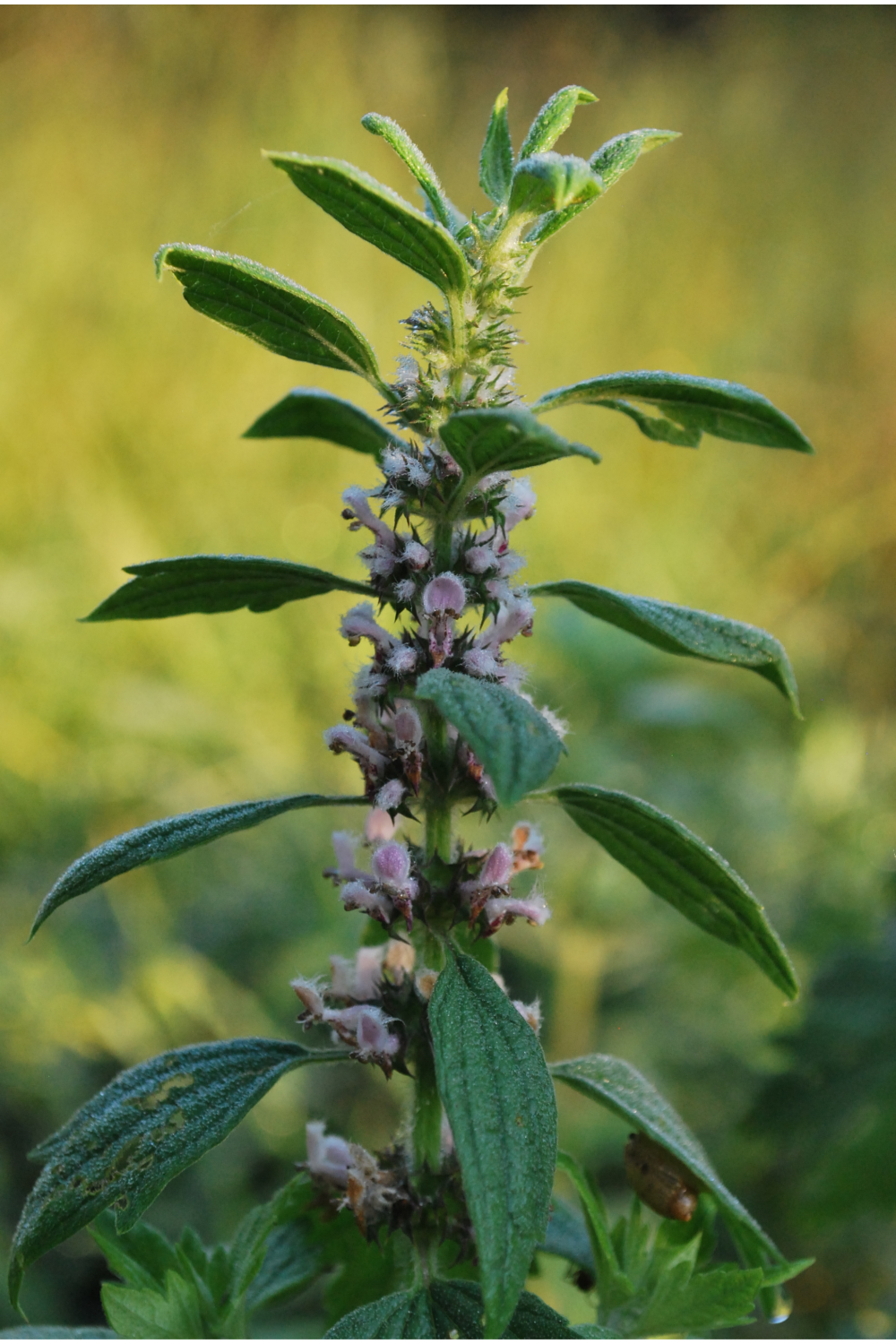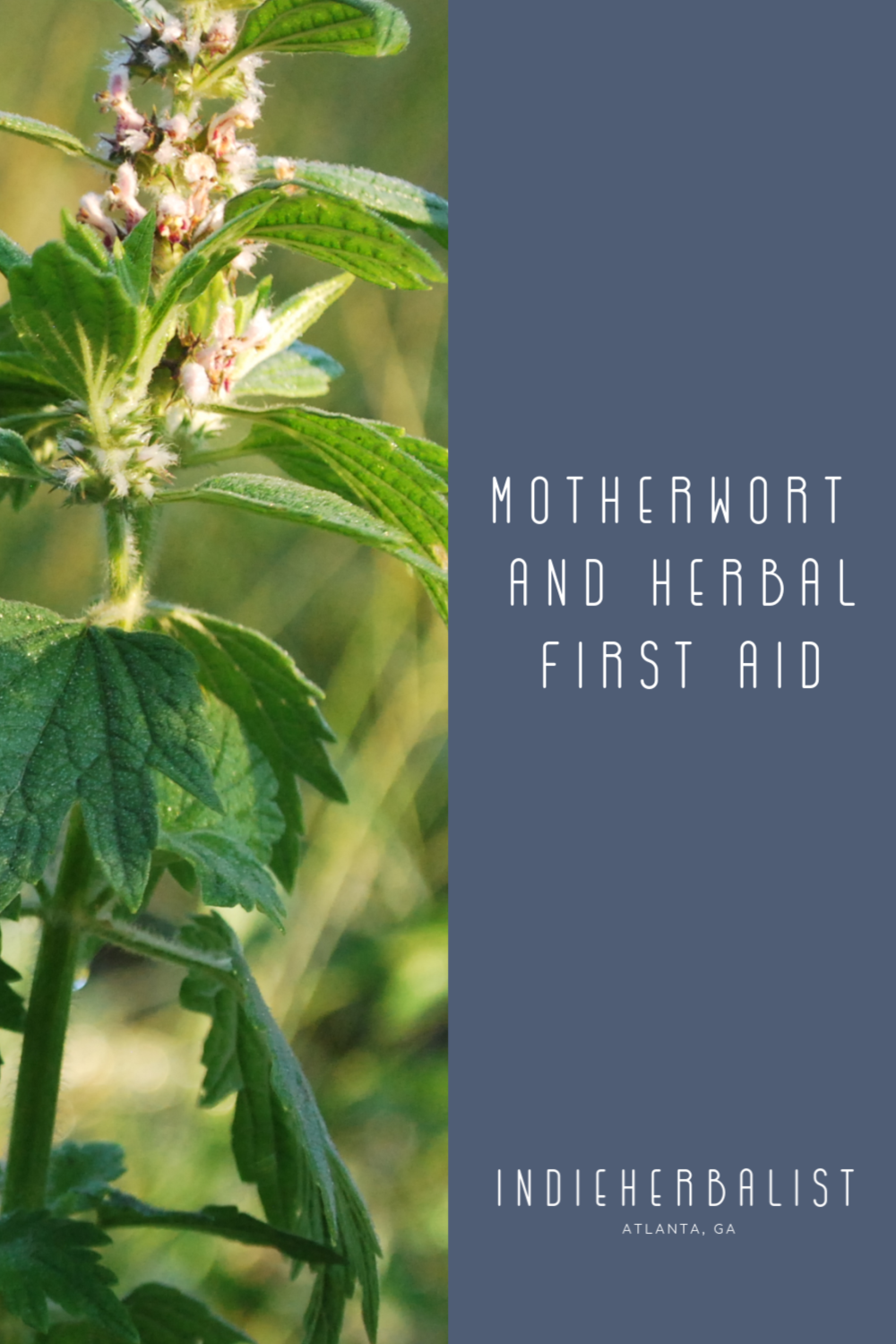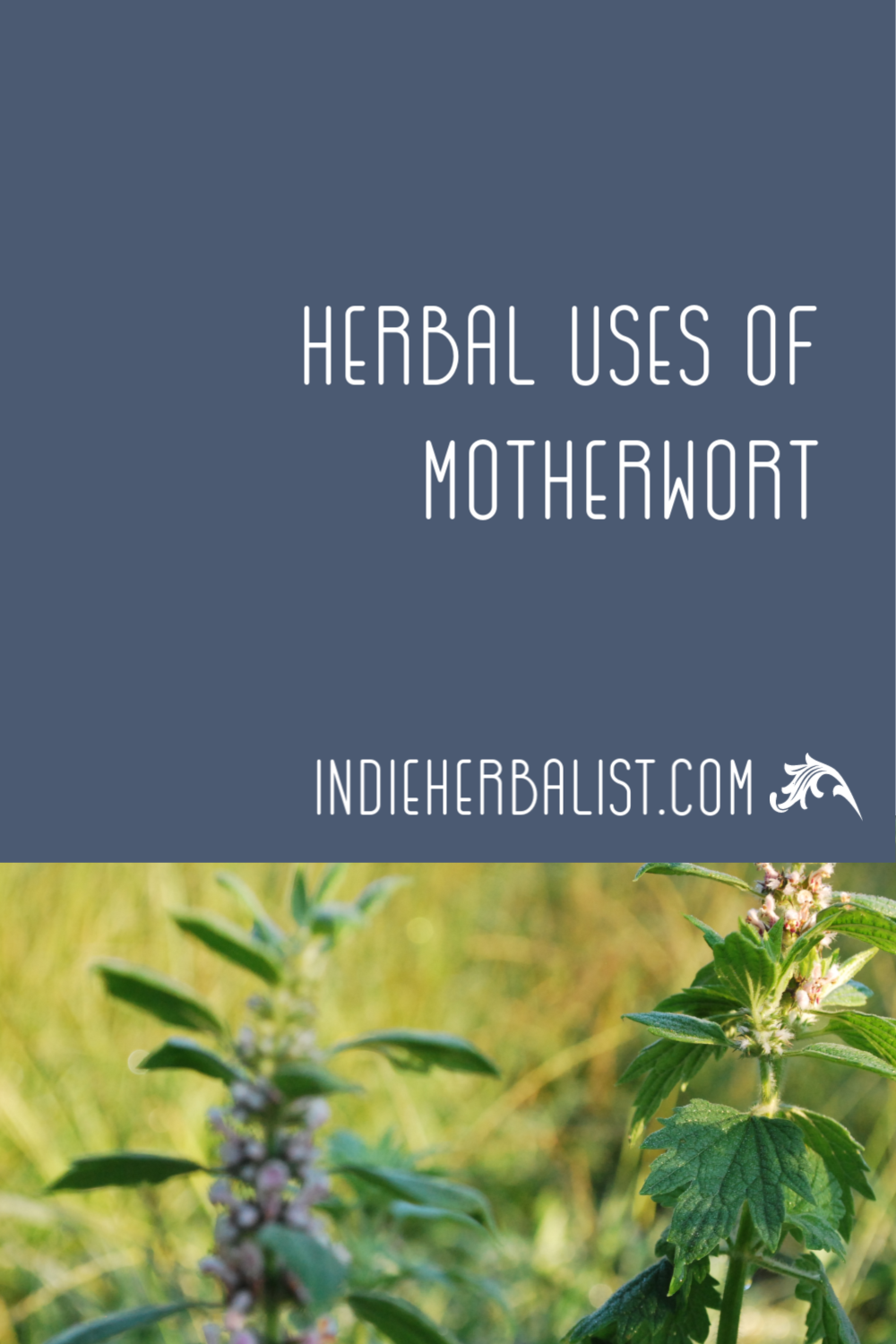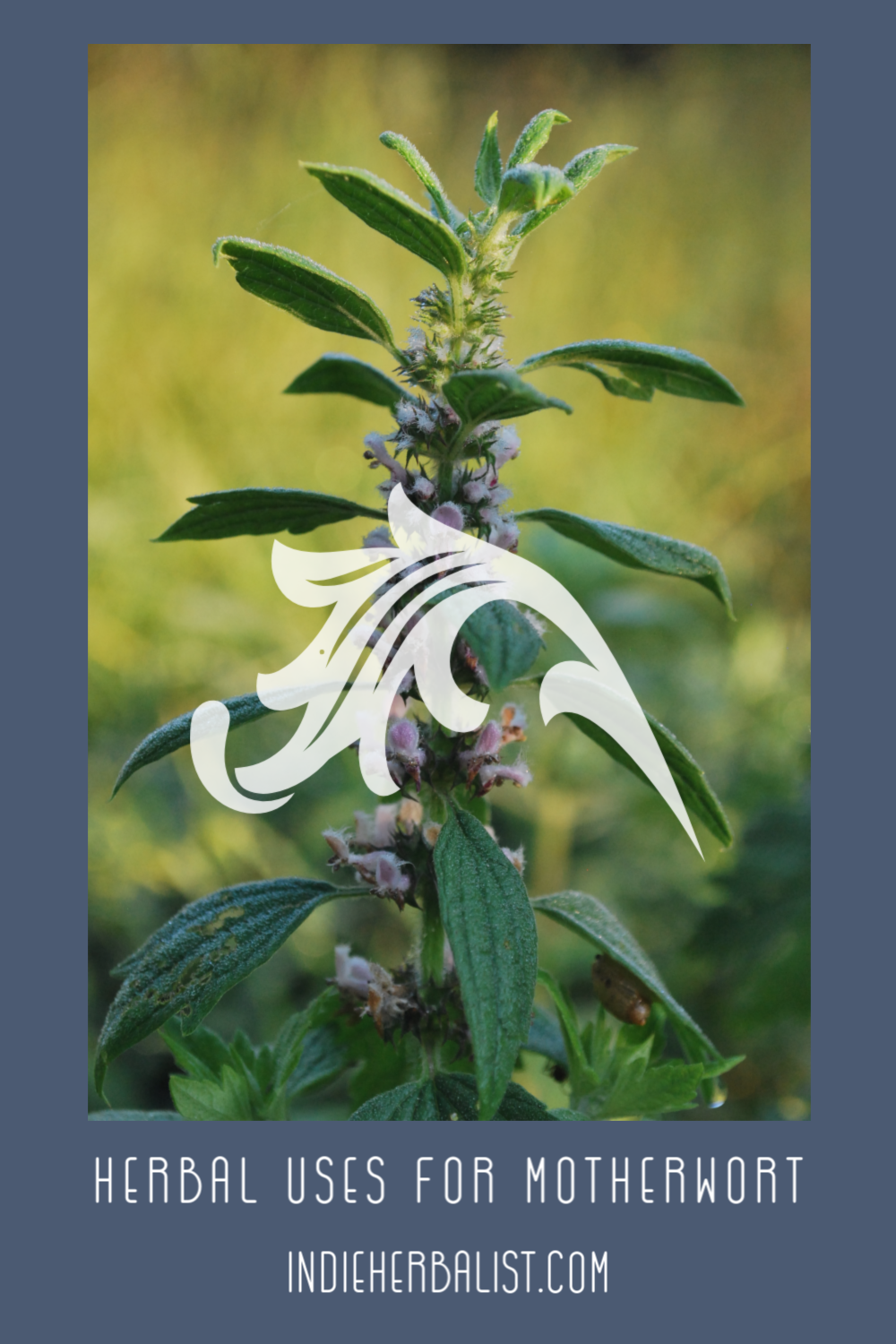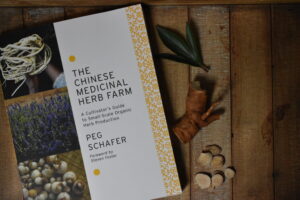Links contained in this post and elsewhere on my website may include affiliate links. When you make a purchase through these links, I earn a commission at no additional cost to you. I only link to products and services that I love - and that I think you will love, too!
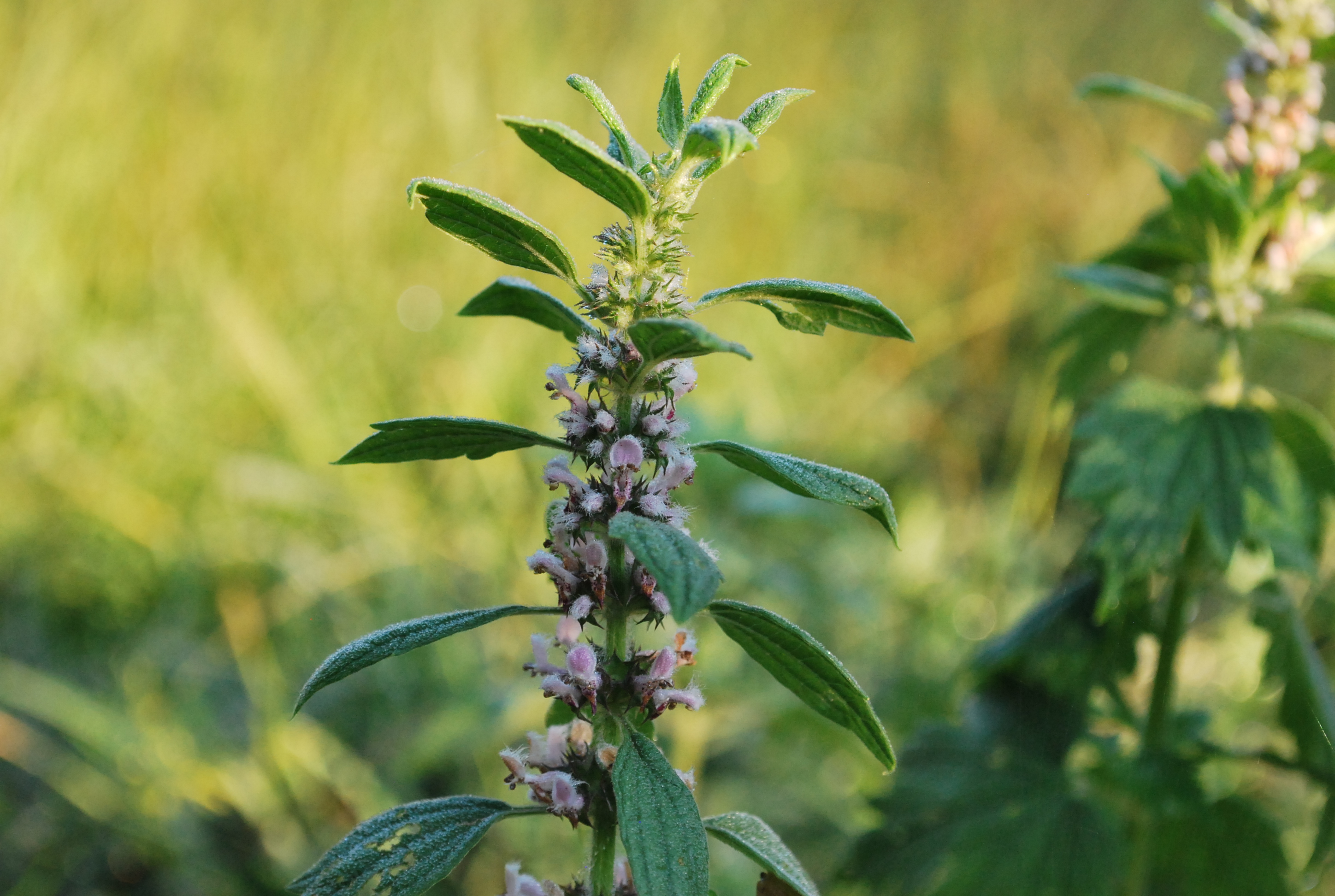
There are many herbal uses for motherwort (Leonurus cardiaca) and it’s a great choice for herbal preparedness kits. I think it’s easy for this herb to get pushed to the side as “just a woman’s herb,” and it does have a lot of traditional uses for women’s health. However, it is also an excellent physical pain and trauma ally, cardiovascular herb, and nervine.
Basically, motherwort is a staple in my herb garden and in my personal emergency preps! Read on to learn more about why motherwort is a great choice for emergency planning.
Herbal Uses of Motherwort
Motherwort is a digestive bitter and nervine with an affinity for the heart. It’s bitter, cooling, and acrid.
Herbal classifications for motherwort include:
- antispasmodic
- cardiotonic
- diaphoretic
- emmenagogue
- hepatic
- hypotensive
Immune System
In Traditional Chinese Medicine, cooling, bitter herbs like motherwort are often employed for infections. There is some evidence that motherwort may have antiviral properties (1), but it has traditionally been used as a liver tonic and diaphoretic during recurring fevers (4). Some traditional immune system uses include:
- traditional use in “intermittent” fevers
- respiratory support – relaxing herb for asthma and chest colds
- seizures after high fevers
It was also used as a vermifuge in medieval herbalism (1).
Injury and Physical Trauma
There’s a strong traditional link between motherwort and pain. Traditional herbalists used motherwort for rheumatism, spinal problems, and neuralgia (4).
Motherwort definitely has a place in my herbal preps for injury after-care. Some examples of how motherwort can be used in these types of situations include:
- High blood pressure, heart irregularities worse from stress of emergency or pain
- Soothing herb in the face of cramping pains of all types
- Restoring muscular and skeletal balance after physical trauma
Sometimes, pain can be made worse by the body tightening and resisting around an injury to provide stability. It makes sense to consider motherwort when that happens.
Nervous System
Traditional herbalists have used motherwort for epilepsy, sleep disorders, anxiety, and syncope (1). As a modern nervous system ally, motherwort is a botanical that some people describe as especially comforting. I’ve also heard it described as lending courage. I can understand both of these connections, as I find motherwort to be a grounding, calming influence in the face of chaos and uncertainty. Other historical indications that motherwort might be a good match include:
- Experiencing panic and dread yet feel frozen in place or unable to act (like a deer in the headlights)
- strong emotions that you feel in the heart/chest, or anxiety accompanied by heart irregularities
- Muscle tension related to stressful situations, especially neck and shoulder pain or rigidity
- tension headaches or vertigo from tension
It’s good to remember this herb as an ally for emotional care that can help shore up mental resiliency after a traumatic event.
Motherwort for Women’s Health
Motherwort is also a good herb to remember for women’s health. In TCM, there’s a link between PMS and the liver. Cooling, bitter nervines like motherwort are thus very useful for hormone balance. According to traditional use, they gently cool and cleanse the liver so it can keep hormone levels healthy. Motherwort’s relaxing nature also makes it comforting for periods that are slow to start with lots of cramping. It’s traditionally been used for:
- dysmenorrhea
- amenhorrea
- PMS
- vaginismus
- menstrual cramps
- menstrual irregularities during puberty
In traditional herbalism, motherwort was also used for support during pregnancy and childbirth. As such, it was used to induce labor and when the afterbirth was retained (4).
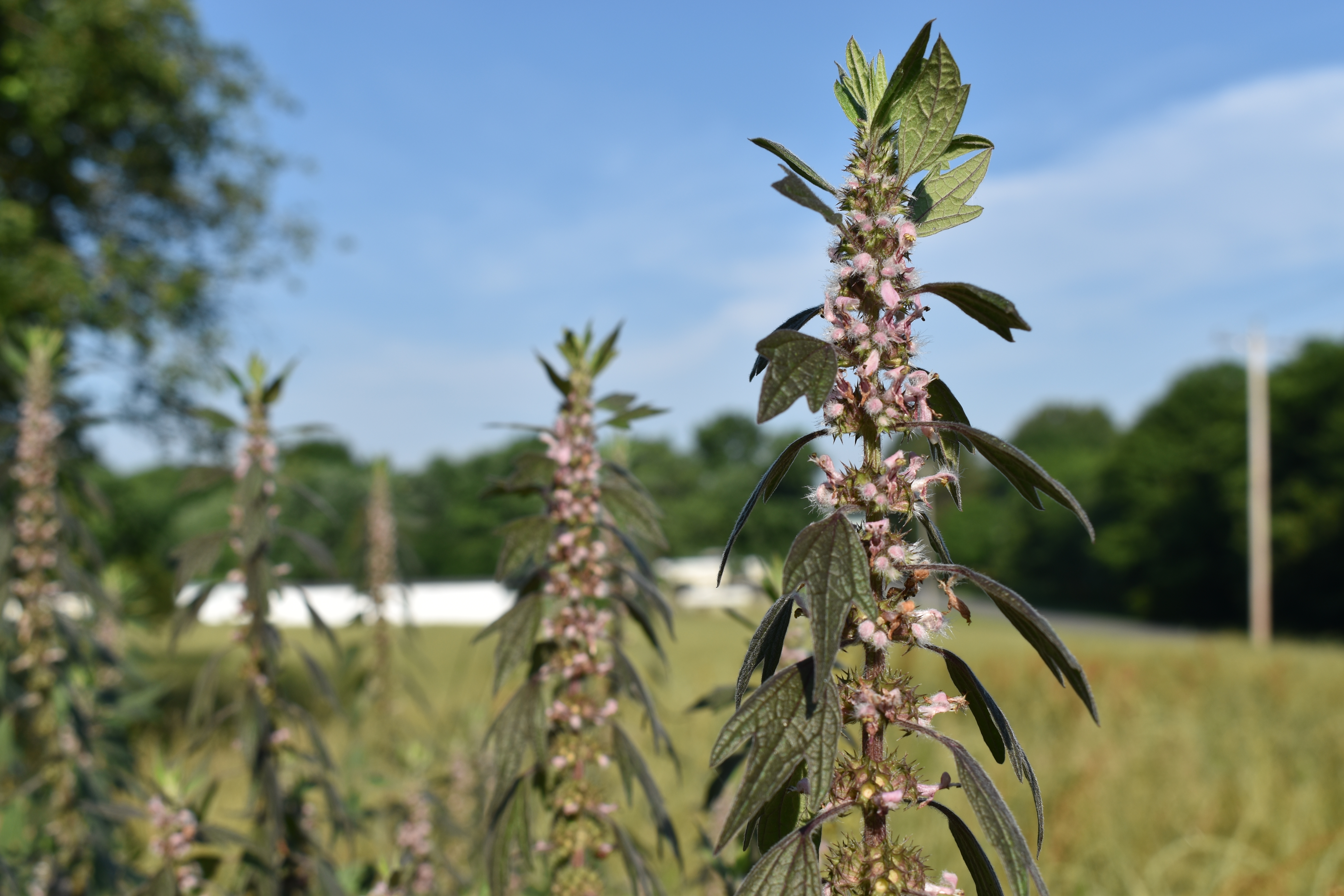
Safely Using Motherwort
Most of the cautions around using motherwort are based on theoretical considerations. This herb is traditionally classified as an emmenagogue (an herb that moves blood and promotes healthy uterine bleeding), and so may not be suitable during pregnancy or during menstrual cycles with heavy bleeding (3). It is traditionally use for hyperthyroidism, so may not be appropriate for regular use in someone with hypothyroidism (1, 2). Motherwort could also potentially interact with sedatives and cardiac medications (2).
Determining Serving Size for Motherwort
Knowing the correct range of serving sizes is also important for herbal safety. One of my favorite references for determining herbal serving sizes is David Hoffman’s herbal textbook, Medical Herbalism (#affiliate). According to Hoffman, 1 to 4 ml of motherwort can be used daily (1:5 extract with 40% alcohol). Easley and Horne in The Modern Herbal Dispensatory (#affiliate) suggest a 1:5 extract in 60% alcohol, but give the same range of 1 to 4 ml per day. These ranges are for adults.
Motherwort can also be used as an infusion. Hoffman suggests using 1-2 teaspoons of dried herb steeped in 8 oz of hot water as one serving. Even though there are many herbal uses for motherwort, this herb’s flavor is intensely bitter. You may find that you prefer sweetening your motherwort tea. You can also add spices or fruit juices to help temper the taste.
Harvesting Motherwort and Parts Used
I usually harvest motherwort in late spring or early summer. At this stage in the plant’s growth cycle, the plant has put out lots of leafy growth. It also has sent up flower stalks but the flower buds are still young. As the flowers bloom, they become quite sharp and spiky – don’t let the cute purple fluff fool you! I prefer to harvest before the flowers become painful to touch. It just makes the harvesting experience a little more pleasant.
The aerial parts – stem, leaf, and flowering tops- can be used. I don’t usually use the flowers, so I snip those off and then hang the plant to dry in bundles. Motherwort has a low moisture content. It doesn’t take long for the leaves and stalks to dry even in our humid climate. Be sure to dry your motherwort in a cool, dark place. Running a dehumidifier nearby can help shorten the drying time.
New to Home Herbalism?
If you are new to learning home herbalism, you might enjoy my article the Complete Home Apothecary Start Up Guide.
Other related articles:
References
(1) American Botanical Council (2000) Motherwort Herb. Expanded Commission E.
(2) Hoffman, D. (2003) Medical Herbalism: The Science and Practice of Herbal Medicine. Healing Arts Press.
(3) Easley, T., Horne, S. The Modern Herbal Dispensatory: A Medicine-Making Guide. North Atlantic Books.
(4) Woods, M.

About Me
I’m an herbalist and author currently based in Atlanta, Georgia. My herbal recipe book, The Complete Guide to Adaptogens, is available wherever books are sold.
